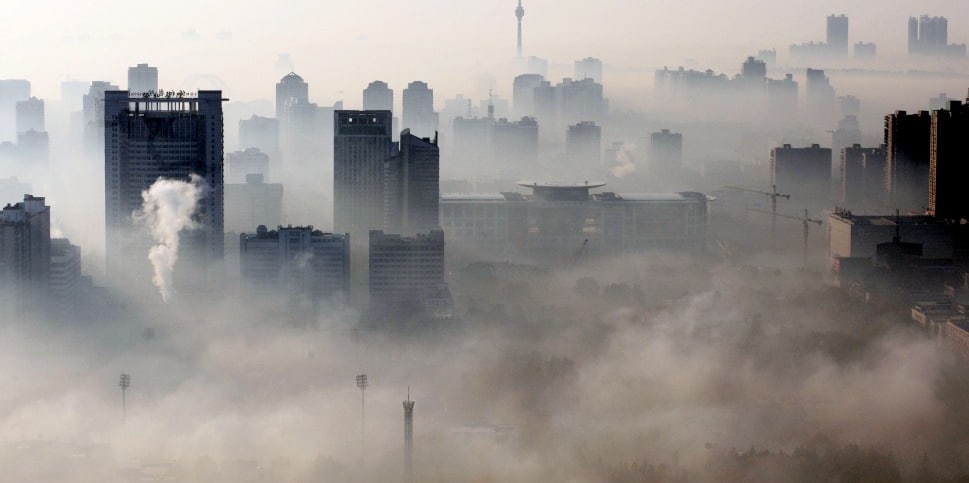
There are temptations that cannot be passed by, and alas, Eli has been forced to adopt (rather than mitigate) the Twitter. The new address for bunny droppings, is, what else, @EthonRaptor, because who but a big, liver hungry bird could tweet.
Now some ask, precisely what was this delicious morsel of liver that brought the Rabett to this fine pass. Indeed it was something special, it appears that
Global Environmental Change has invited Roger Jr. to take a hike and they did it in fine Pielke fashion, noting that it was time to give others a chance to practice their editorial duties. Roger, of course, wants a detailed explanation. Eli suspects he ain't gonna get the whole thing, however, FWIW, he now says
UPDATE 2: Neil Adger, editor of GEC, replies to explain, contrary to the earlier email, that I have been removed from the editorial board due to a perception of my "waning interest in the journal" citing my
declining of 3 reviews last year (I'd guess overall that I declined 50 or more requests to review last year and took on about 12, welcome to academia;-).
Maybe true enough, but when you are a member of an editorial board it is always your turn in the barrel (
explanation of Eli's obscure reference for Carrot Eater), however, it is Roger and the whining never stops
Of course, he could have asked about my interest before removing me from the Board. He did not comment on my critical blog post. I take his response to mean that I am indeed the only one who has been removed at
this time. So there you have it, another climate ink blot. Coincidence? You be the judge.
Eli judges, it is something else, e.g. that opinions against Roger's act are hardening. What was once amusing is now no longer so, you only get to whine so often and Ethon's dinner has made a career out of it.
Which brings us to the more important part. According to baby, the real reason he was canned was a shoddy blog post of his on a paper "Climate change prediction: Erring on the side of least drama?" by Keynyn Brysse, Naomi Oreskes, Jessica O’Reilly, and Michael Oppenheimer which appeared in GEC. Roger, of course, provides a link (
here $) to the paywalled version, Eli, in a few seconds with google scholar found the
free to download article in press version. Coincidence? You be the judge:)
If you want a non shoddy review of the paper,
try Skeptical Science. Eli as is his wont is going to look at two things. First, the authors select a few key topic, intense rainfall, melting of the Arctic, ocean heat uptake, CO
2 emissions and sea level rise where clearly the consensus evaluation underestimated the effect. They also looked at hurricane intensity and frequency and permafrost melting, two cases where there is no strong consensus and described how these were conservatively handled. Now Eli comes to the first point, what got Roger going. Well, wait for the second part, but the authors certainly set bait in by discussing his take on sea level rise. Coincidence? High regard? You be the judge:)
In a 2008 paper, Roger Pielke, Jr., expanded this analysis to include the predictions offered by scientists in earlier IPCC assessments (Pielke, 2008). Pielke observed that for sea level rise, actual changes have been greater than forecast in two of three prior IPCC reports, while falling below the median prediction in the First Assessment Report (FAR). Predicted temperature changes, also higher in the FAR than subsequently observed, were in line with observations for the three subsequent assessments, taken as a whole.
Pielke noted that ‘‘A comprehensive and longer-term perspective on IPCC predictions, such as this, suggests that more recent predictions are not obviously superior [to older ones] in capturing climate evolution’’ (2008, p. 206). This is of course true: More observations, model runs, and even greater understanding of individual aspects of a complex system do not necessarily lead to convergence on truth (Oppenheimer et al., 2008). But the relevant question is how the projections have stood up to empirical evidence of what actually has occurred in the natural world during the time period under discussion. Pielke concluded that ‘‘Once published, projections should not be forgotten but should be rigorously compared with evolving observations’’ (2008, p. 206). We agree. When one does this, as both the Rahmstorf and Pielke analyses do, one finds an overall tendency in the most recent three assessments toward either no bias or toward underestimation.
The spittle really starts to fly over at the rock, when it comes to discussing the reasons for the tendency towards underestimation. Some time ago, James Hansen had talked about an innate conservatism in science.
He has suggested that ‘‘scientific reticence’’ is preventing scientists from effectively communicating the true danger of the potential disintegration of the Greenland and West Antarctic ice sheets (GIS and WAIS) (Hansen, 2007). Hansen argues that scientific reticence involves ‘‘a tendency for ‘gradualism’ as new evidence comes to light,’’ and a ‘‘pressure on scientists to be conservative,’’ to submit scientific papers that ‘‘do not push too far and are larded with caveats’’ (Hansen, 2007, p. 2). Scientific reticence also influences assessments like the IPCC reports, he argues, which ‘‘produce a
consensus’’ among thousands of scientists from most of the world’s nations, who are collectively ‘‘extremely careful about making attributions’’ (Hansen, 2007, p. 5).
Brysse, et al. don't think this goes far enough
The frequent attacks on Stephen Schneider—as well as attacks on other climate
scientists such as Benjamin Santer and Michael Mann—suggests that one
possible reason why scientists may have underestimated the threat of anthropogenic
warming is the fear that if they don’t, they will be accused by
contrarians (as was Schneider) of being alarmist fear-mongers. That is
to say, pressure from skeptics and contrarians and the risk of being
accused of alarmism may have caused scientists to understate their
results."
Now by coincidence, you decide, our friend feels insulted (must be hard being Roger, being insulted all the time)
Not only is the accusation of a systematic bias an insult to the
integrity of practicing scientists, but the entire paper is built on an
empirical foundation that does not touch the ground.
Well let's look at Roger's blog. In the
post immediately below, he accused Marshall Shepherd President of the American Meteorological Society of giving distorted testimony to the Congress and flatly not telling the (Pielke version of the) truth. Coincidence? You be the judge:)
Eli understands that
Brian is doing some crowd sourcing in the post below, Eli would appreciate entries in the Roger Pielke accuses those who disagree with him of being alarmist fear-mongers contest (and any other nasty thing he can think of). Coincidence? You decide:)
 James Fallows points to a post on the Chinese imposition of a pollution emission tax. Fallows, who lived for several years recently in China and got to taste same, provides the talking points:
James Fallows points to a post on the Chinese imposition of a pollution emission tax. Fallows, who lived for several years recently in China and got to taste same, provides the talking points:












